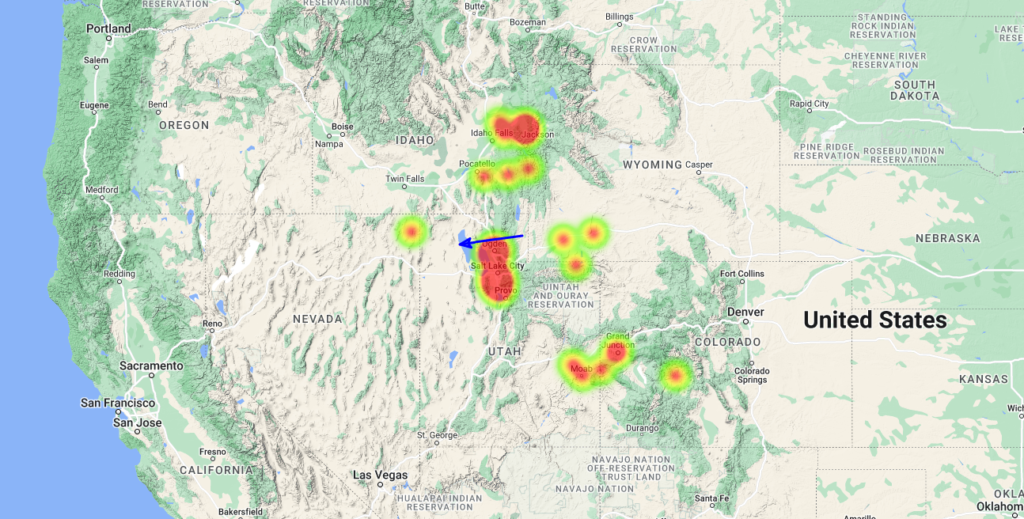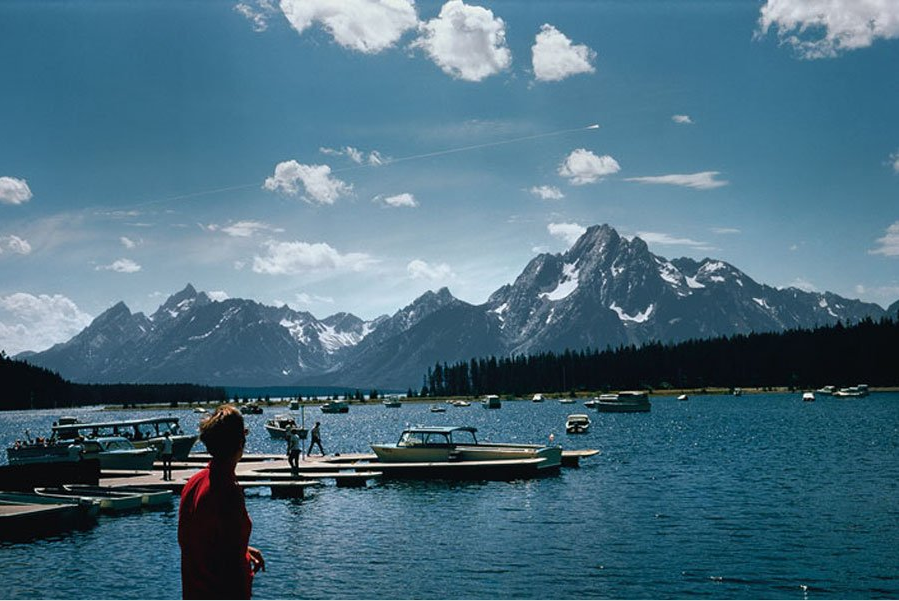Coincidences are sometimes really upsetting… On the Wikipedia page regarding Grand Teton (Wyoming) earthgrazer daylight fireball, that occured on August 10, 1972, a strange and obscure prediction was written: “The atmospheric pass modified the object’s mass and orbit around the Sun, but it is probably still in an Earth-crossing orbit and is thought to have passed close to Earth again in August 1997. However IAU’s website states that these “suggestions have not been substantiated”. The prediction of a close passage in 1997 was based on the suggestion by Zdeněk Ceplecha of a post-1972 orbital resonance of about 25 years. If true, the next encounter would be on or near August 10, 2022, albeit with “vanishingly small, but not zero” probability.” On August 13, 2022, around 14h 31min UT, 3 days after the predicted return of the Grand Teton meteoroid (which sweeps back to sapce after grazing the Earth in 1972), a huge daylight fireball was observed and filmed near Salt Lake City (Utah, Figure 1 and videos below)!

Video captured from Lehi (Utah), south of Salt Lake City:
Video captured from Salt Lake City (Utah), by Cesar Martinez:
A meteorite-dropping fireball?
The fireball, which seems to travel from East to West, was visible in broad daylight, which means its magnitude must have been brighter than the Full Moon. It triggered sonic booms that were heard in Northern Utah and Southern Idaho. The acoustic event was also recorded on the seismograph of the University of Utah, confirming its atmospheric origin (and no impact).
No link can be done between the two 1972 and 2022 events, as chance is much more likely than both would be linked, but the coincidence enlightens this dramatic event that was spotted by hundreds of people in broad daylight!
UPDATE (August 16, 22h UT): meteorites from the fireball may have been recovered (news to be confirmed).
August 10, 1972: the Great Daylight fireball over Grand Teton
On August 10, 1972, 20h 29min UT, a very bright fireball was observed and photographed over Grand Teton National Park (Wyoming, Figure 2). It did not really entered the atmosphere, but made a grazing approach at 15 km/s. The 2-10 m diameter meteoroid reached a minimal distance of 59 km above the ground before going back into space. It became part of Apollo asteroid family, a group of near-Earth asteroid which have an orbital semi-major axis greater than that of the Earth (a > 1 AU) but perihelion distances less than the Earth’s aphelion distance (q < 1.017 AU).





 You saw something bright and fast? Like a huge shooting star? Report it: it may be a fireball.
You saw something bright and fast? Like a huge shooting star? Report it: it may be a fireball.  You counted meteors last night? Share your results with us!
You counted meteors last night? Share your results with us!  You took a photo of a meteor or fireball? You have a screenshot of your cam? Share it with us!
You took a photo of a meteor or fireball? You have a screenshot of your cam? Share it with us!  You caught a meteor or fireball on video? Share your video with us!
You caught a meteor or fireball on video? Share your video with us!
2 comments
Thank you for the information.
The map of the 2022 burn points to an azimuth of roughly 260°. The path of the Teton meteor is roughly 0°…. a path 90° at odds with the 1972 event. Anyone care to address this observation?